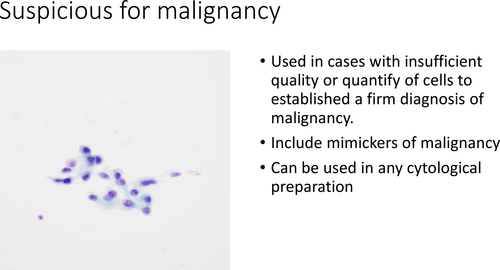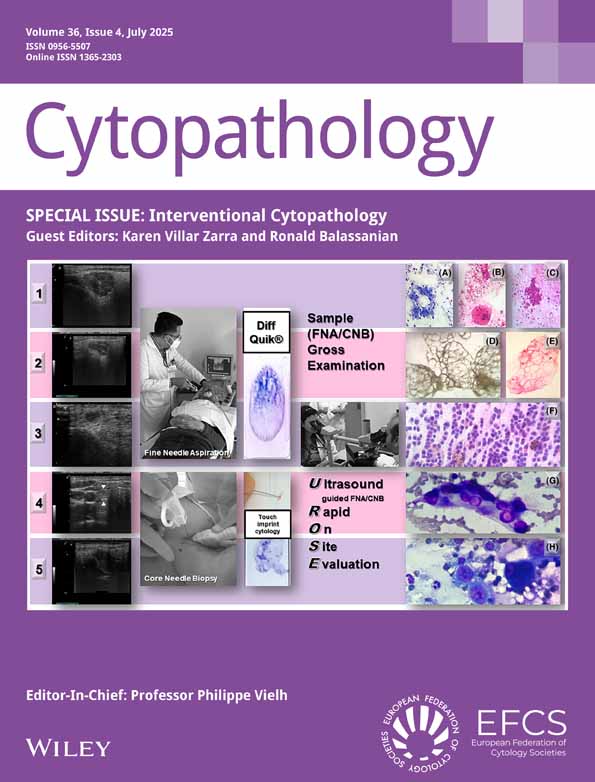Diagnostic Category: Suspicious for Malignancy
The authors have had the opportunity to review and approve the article.
ABSTRACT
The suspicious for malignancy category is used by pathologists to indicate a certain degree of uncertainty but is still able to convey to the treating physician a risk stratification of the deferred diagnosis. The category of suspicious for malignancy can be used in a vast possibility of cytomorphological features and clinical scenarios. Suspicious for malignancy is often used when there is an insufficient number of neoplastic cells for the establishment of a final diagnosis, but in many situations, the number of suspicious cells may be abundant but discrepant with the clinical presentation. In addition, the pathologist must be aware of the many mimickers of malignancy that, when present, may prompt the use of the category. Therefore, there is a need for better illustrations of the use of the category, its pitfalls and suggestions on when the category of suspicious for malignancy can be upgraded for a more definite diagnosis using ancillary studies, even in scant material.
Graphical Abstract
Used in cases with insufficient quality or quantity of cells to establish a firm diagnosis of malignancy. Include mimickers of malignancy. Can be used in any cytological preparation.
The suspicious for malignancy includes samples with insufficient quantify or quality for a definitive diagnosis and includes mimickers of malignancy. This article provides many illustration on possible scenarios in thoracic cytology where the category is used and provide insight of when the category can be upgrade to positive for malignacy.
Conflicts of Interest
The authors declare no conflicts of interest.
Open Research
Data Availability Statement
The authors have nothing to report.





